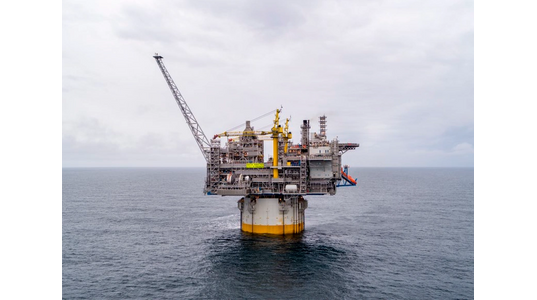
The latest communique out of Norway to indicate the return of “good times” offshore also warns that post-2014 short-termism may have contributed to conditions requiring, ironically, more haste to keep production from plummeting by 2025.
Noting 2018’s higher exploration well count (53 vs. 36 in 2017), the Norwegian Petroleum Directorate (NPD) report at the weekend suggested the number and location of planned oilfield developments was both good and bad: record production between 2020 and 2023 was assured, but after that, there was nothing indicating large, remote reserves would be exploited.
“(Resource growth) is not sufficient to maintain a high level of production after 2025,” NPD director, Bente Nyland was quoted as saying, adding, “More profitable resources must be proven, and the clock is ticking.”
While applauding cost-cutting since oil’s crash in 2014, “more profitable resources” was also a nod to the larger hydrocarbon deposits known to lie away from existing infrastructure. Projects for the remote Barents Sea, for one, have been on-gain, off-again.
Norway-based energy companies in 2018 submitted three oilfield project plans for Oslo’s approval: Nova, Troll Phase 3 and Johan Sverdrup Phase 2. Seven of nine other development plans “relate to oilfield projects linked to existing infrastructure”, or not in remote areas like the Barents, where the only pipelines are Equinor and Vår Energi’s dedicated Snohvit and Goliat production lines to shore.
Despite its achievement and ambitious name, the Polarled pipeline is still really only the trunk line for volumes from the newly opened spar development, Aasta Hansted, and not yet ready for volumes from the Arctic, proper. The pipeline has plenty of capacity to take on more gas.
Acreage access
Part of the “problem” might be Oslo’s twice-yearly license offer to oil companies: the Awards in Predefined Areas and annual ordinary licensing rounds. The APA offer acreage with pipelines nearby for those seeking production as soon as possible.
The NPD said most of Norway’s standing haul of 85 discoveries will likely be slow to development and built as subsea tie-ins to existing infrastructure.
Arctic acreage, while heavily subscribed, is for the deep-pocketed or the oil-focused. A lack of infrastructure, distances and tougher environmental rules preclude speedier development in the Barents. There, for the past 15 years, resource development has been just 60 percent that of the mature North Sea.
The Barents contains two-thirds of the Norway’s undiscovered resources. Despite discoveries of oil that drew the likes of Lundin Petroleum, Norway is keen to promote this Arctic gas
“In the time ahead, there will be more available capacity (Polarled) and other infrastructure for gas. This means that it is more attractive to explore for gas, and it is important that the industry exploits this opportunity,” Nyland said.
Two of three 2018 projects are also in mature areas, but it’s Norway’s remote gas that lies “stranded”. The NPD forecast suggests that — short of new discoveries — maturing “new projects on producing fields” will be crucial to keeping E&P spending “high”.
Still, a record 87 new production licenses were awarded offshore Norway in 2018. New field developments include Luno II, Krafla and Cara, and “decision-gate” looms for the redevelopment of older fields, Tor and Hod.
